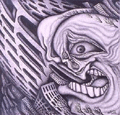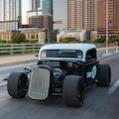Installing front suspension, ran into an issue. The castle nuts on both front spindles, upper and lower, tighten down further than the holes for the cotter pin (holes are above castle 'peaks'). I used the spacer on the lower and there was nothing to use on the upper. I haven't even torqued them yet, just snug with a wrench. Did I maybe do something wrong?
- Home
- Latest Posts!
- Forums
- Blogs
- Vendors
- Forms
-
Links

- Welcomes and Introductions
- Roadster
- Type 65 Coupe
- 33 Hot Rod
- GTM Supercar
- 818
- Challenge Series
- 289 USRCC
- Coyote R&D
- Ask a Factory Five Tech
- Tech Updates
- General Discussions
- Off Topic Discussions
- Eastern Region
- Central Region
- Mountain Region
- Pacific Region
- Canadian Discussions
- Want to buy
- For Sale
- Pay it forward
-
Gallery

- Wiki-Build-Tech


 Thanks:
Thanks:  Likes:
Likes: 

 Reply With Quote
Reply With Quote





